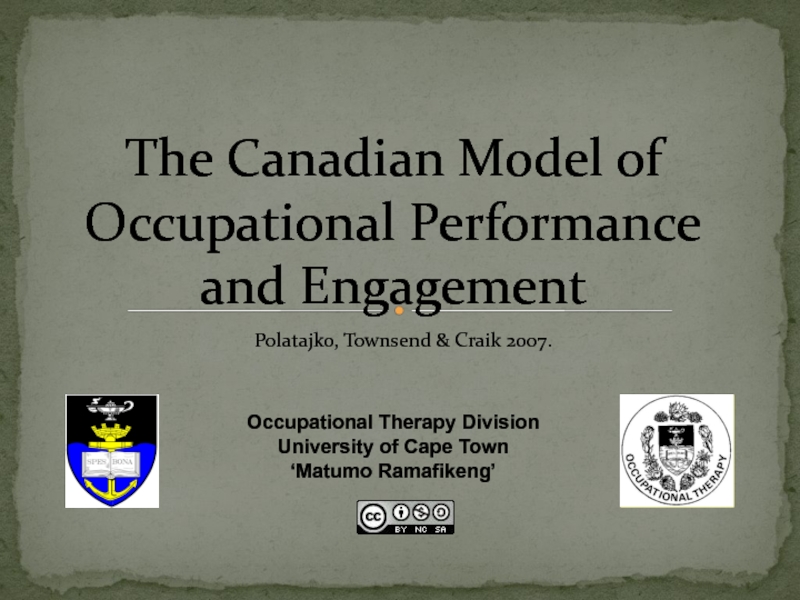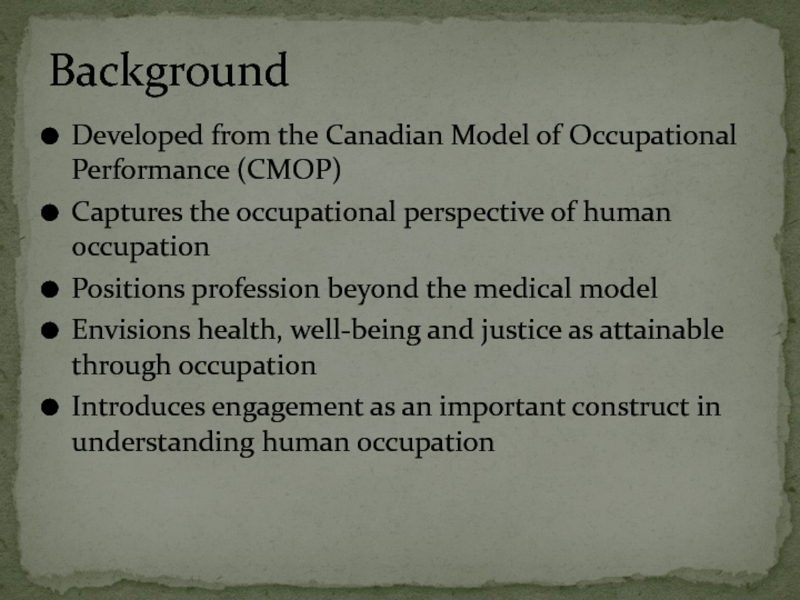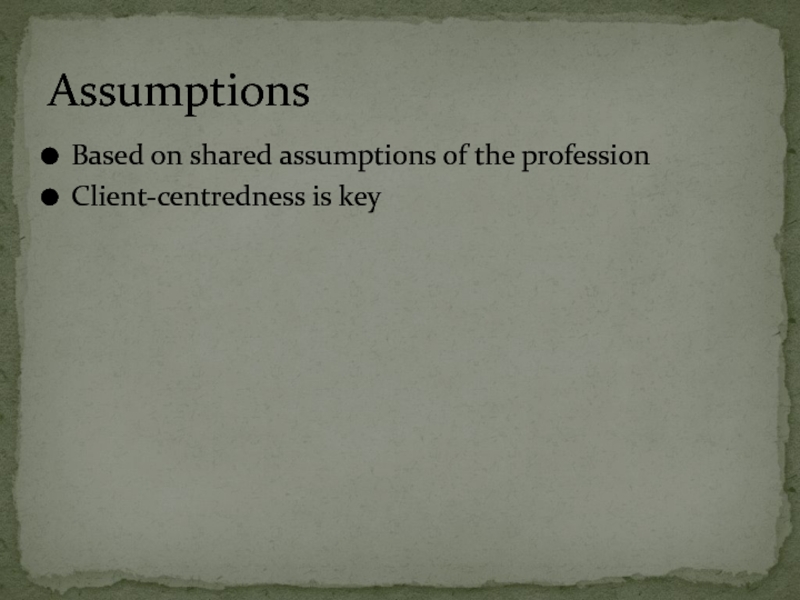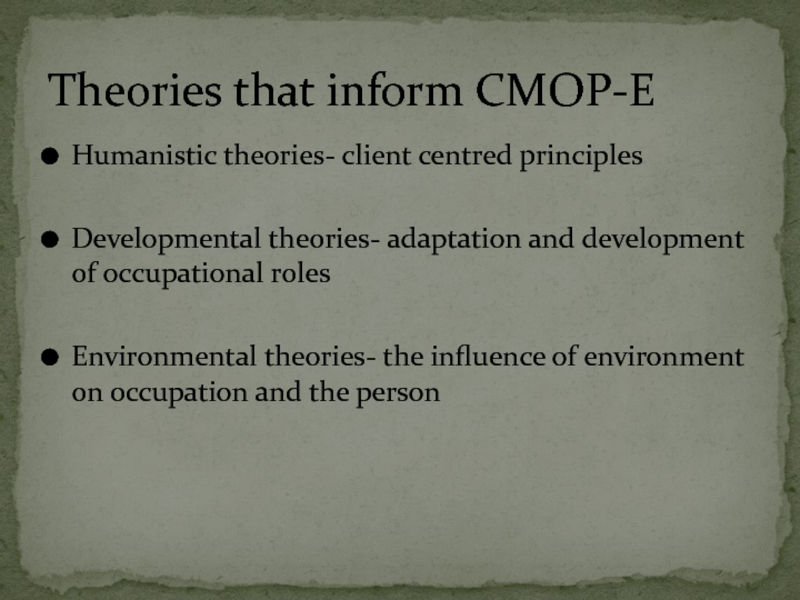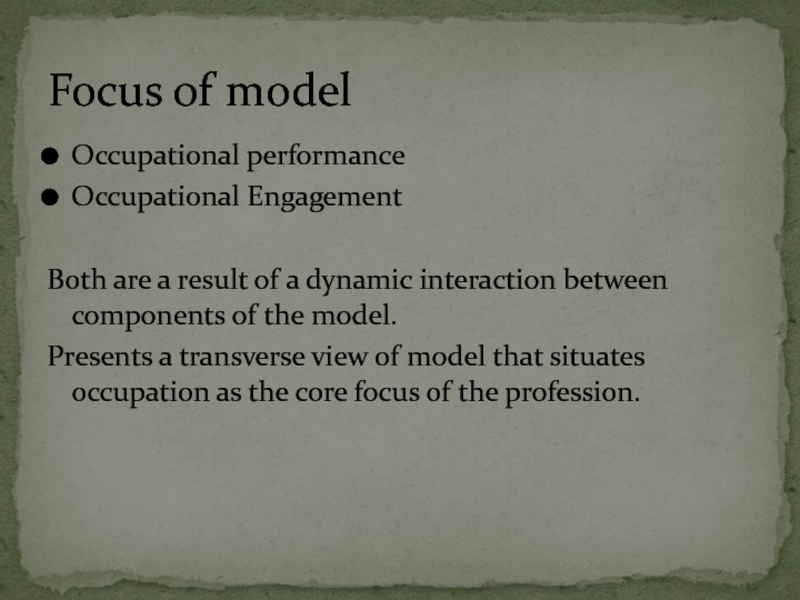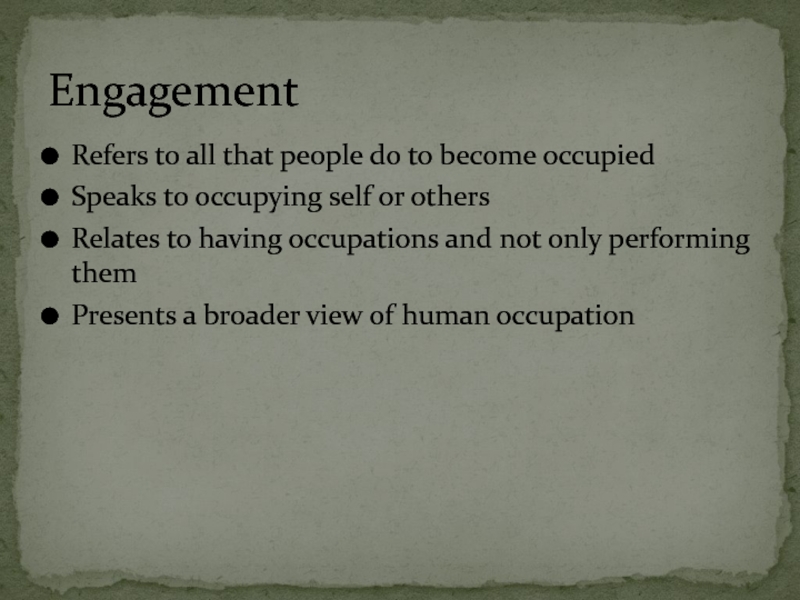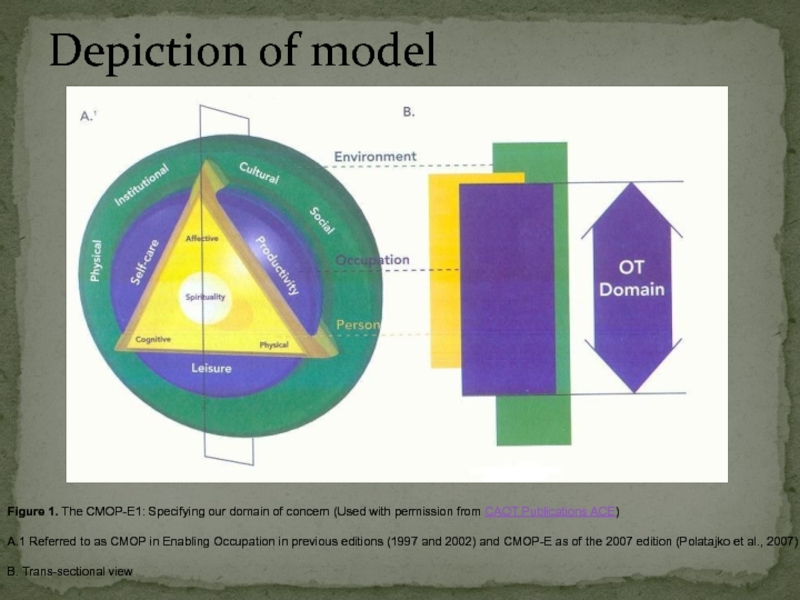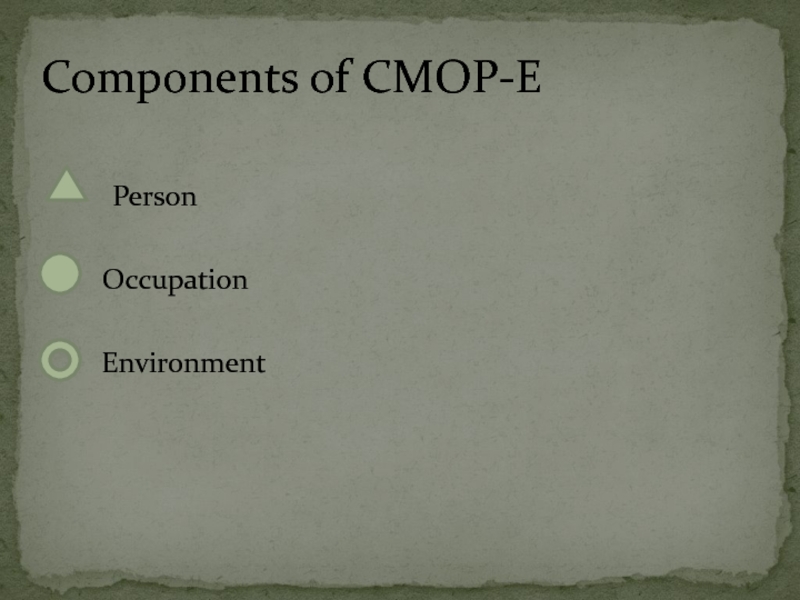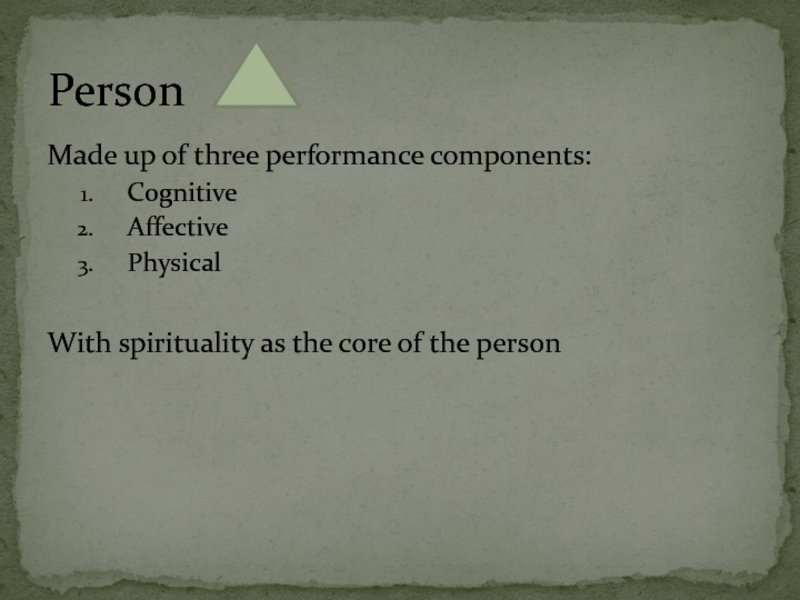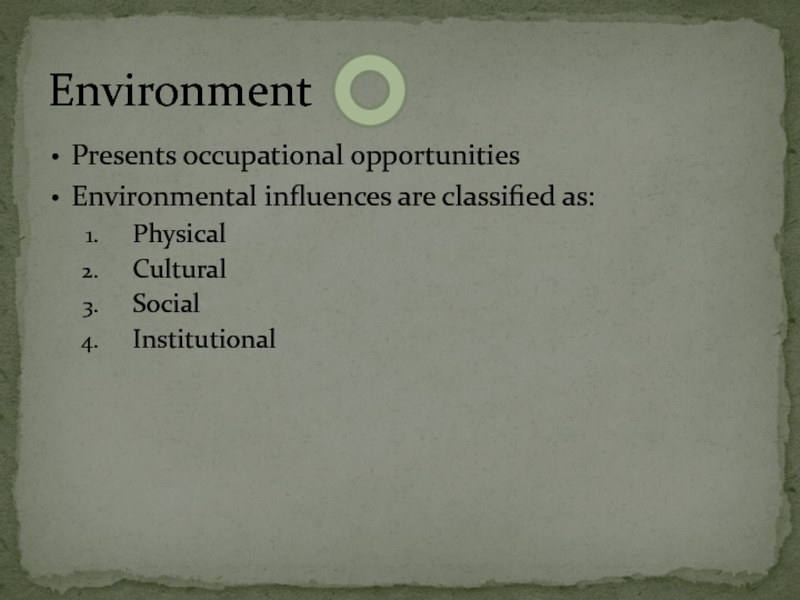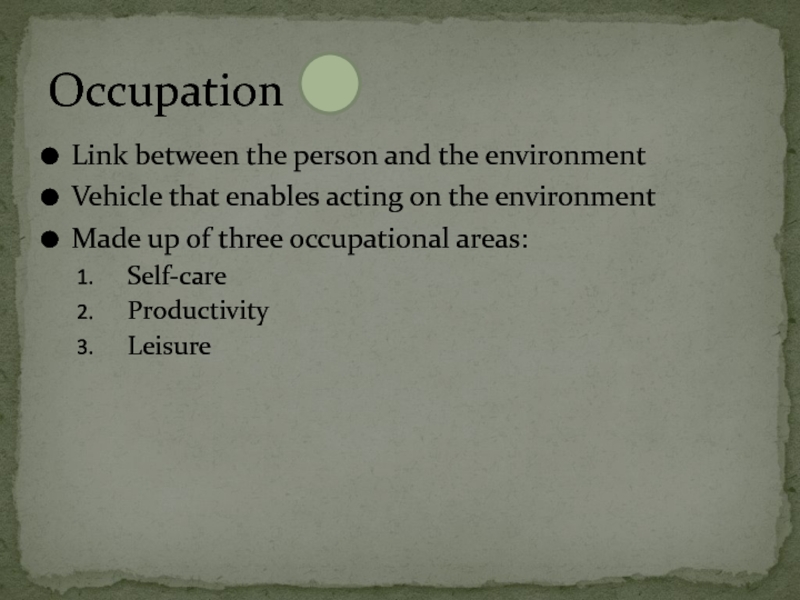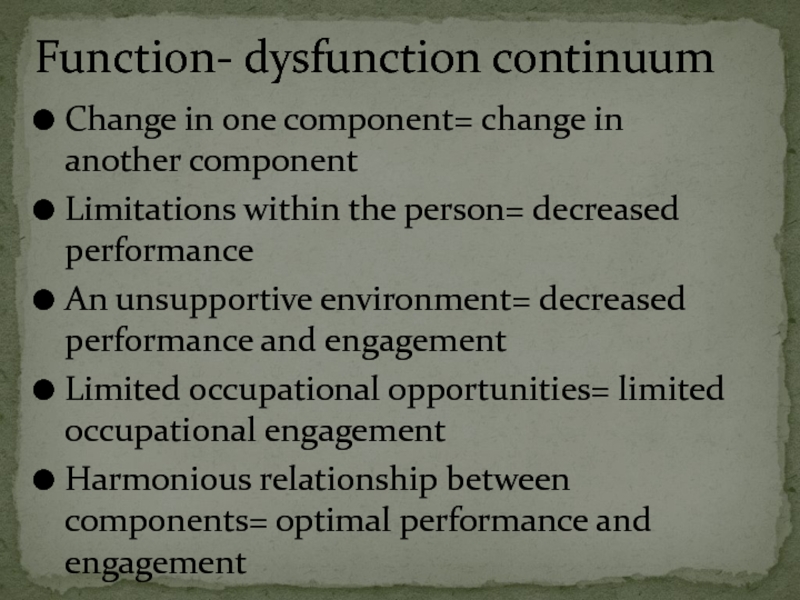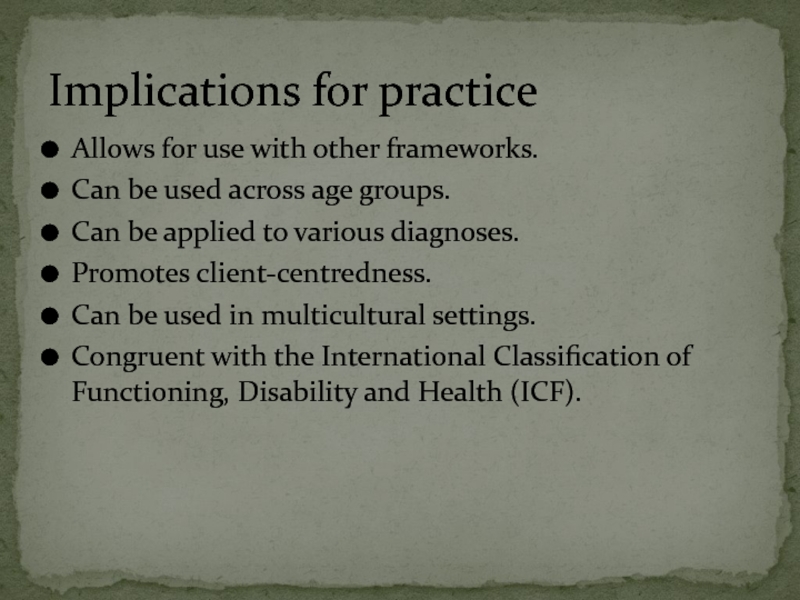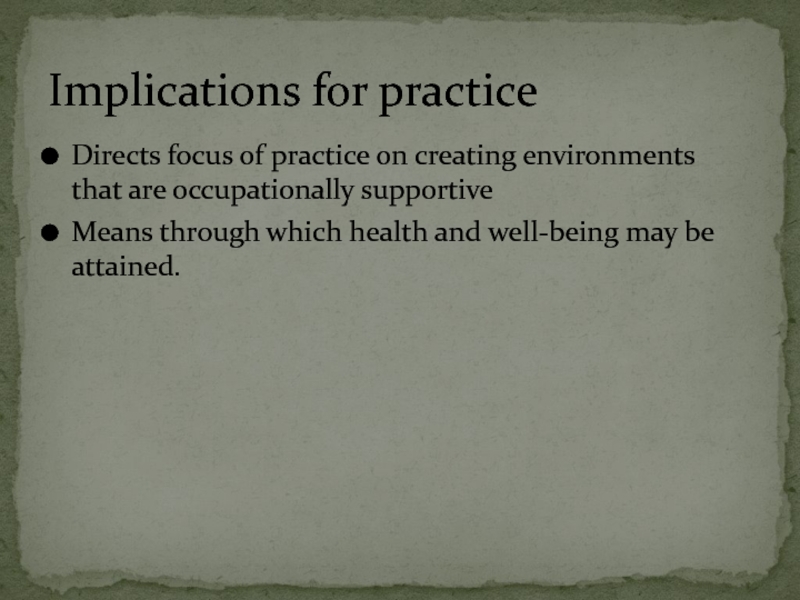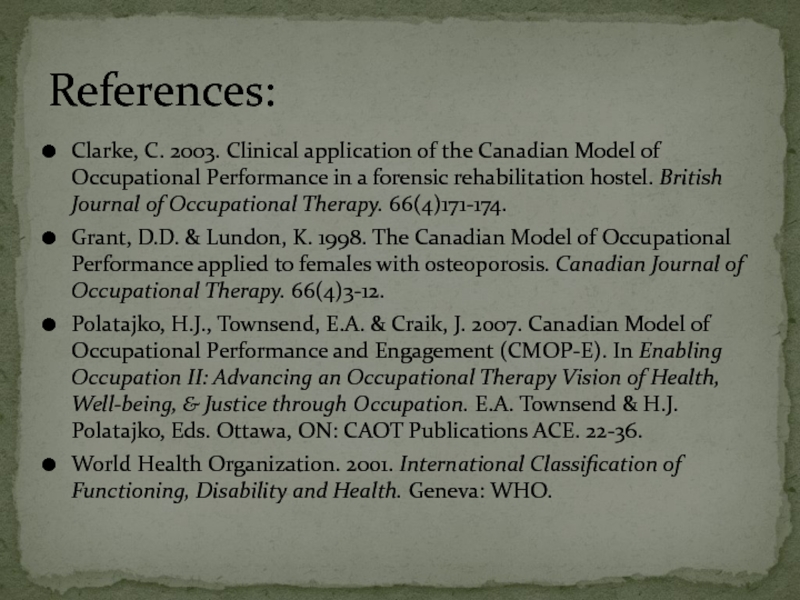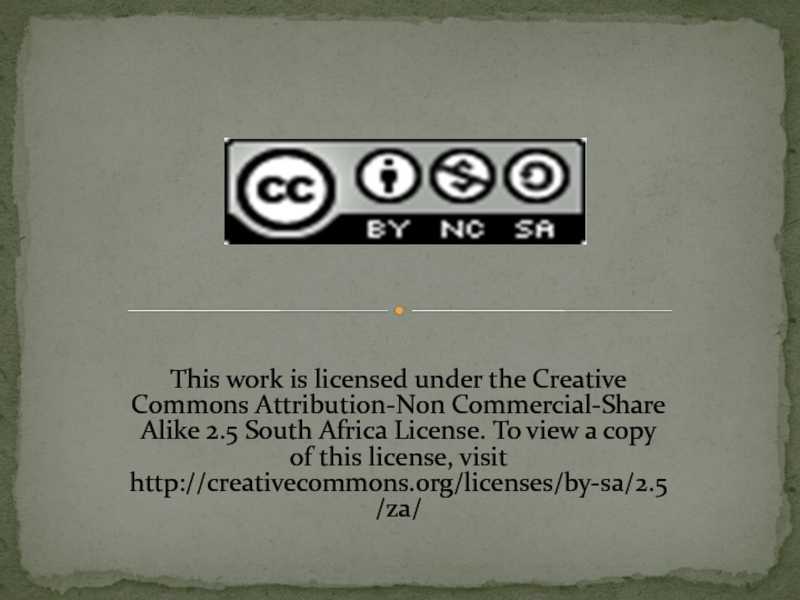Occupational Therapy Division
University of Cape Town
‘Matumo Ramafikeng’
- Главная
- Разное
- Дизайн
- Бизнес и предпринимательство
- Аналитика
- Образование
- Развлечения
- Красота и здоровье
- Финансы
- Государство
- Путешествия
- Спорт
- Недвижимость
- Армия
- Графика
- Культурология
- Еда и кулинария
- Лингвистика
- Английский язык
- Астрономия
- Алгебра
- Биология
- География
- Детские презентации
- Информатика
- История
- Литература
- Маркетинг
- Математика
- Медицина
- Менеджмент
- Музыка
- МХК
- Немецкий язык
- ОБЖ
- Обществознание
- Окружающий мир
- Педагогика
- Русский язык
- Технология
- Физика
- Философия
- Химия
- Шаблоны, картинки для презентаций
- Экология
- Экономика
- Юриспруденция
The canadian model of occupational performance and engagement презентация
Содержание
- 1. The canadian model of occupational performance and engagement
- 2. Developed from the Canadian Model of Occupational
- 3. Based on shared assumptions of the profession Client-centredness is key Assumptions
- 4. Humanistic theories- client centred principles Developmental
- 5. Occupational performance Occupational Engagement Both
- 6. Refers to all that people do to
- 7. Depiction of model Figure 1. The CMOP-E1:
- 8. Person
- 9. Made up of three performance components: Cognitive
- 10. Presents occupational opportunities Environmental influences are classified
- 11. Link between the person and the environment
- 12. Change in one component= change in another
- 13. Allows for use with other frameworks. Can
- 14. Directs focus of practice on creating environments
- 15. Clarke, C. 2003. Clinical application of the
- 16. This work is licensed under the
Слайд 1Polatajko, Townsend & Craik 2007.
The Canadian Model of Occupational Performance
Слайд 2Developed from the Canadian Model of Occupational Performance (CMOP)
Captures the
Positions profession beyond the medical model
Envisions health, well-being and justice as attainable through occupation
Introduces engagement as an important construct in understanding human occupation
Background
Слайд 4Humanistic theories- client centred principles
Developmental theories- adaptation and development of occupational
Environmental theories- the influence of environment on occupation and the person
Theories that inform CMOP-E
Слайд 5Occupational performance
Occupational Engagement
Both are a result of a dynamic interaction
Presents a transverse view of model that situates occupation as the core focus of the profession.
Focus of model
Слайд 6Refers to all that people do to become occupied
Speaks to occupying
Relates to having occupations and not only performing them
Presents a broader view of human occupation
Engagement
Слайд 7Depiction of model
Figure 1. The CMOP-E1: Specifying our domain of concern
A.1 Referred to as CMOP in Enabling Occupation in previous editions (1997 and 2002) and CMOP-E as of the 2007 edition (Polatajko et al., 2007)
B. Trans-sectional view
Слайд 9Made up of three performance components:
Cognitive
Affective
Physical
With spirituality as the core of
Person
Слайд 10Presents occupational opportunities
Environmental influences are classified as:
Physical
Cultural
Social
Institutional
Environment
Слайд 11Link between the person and the environment
Vehicle that enables acting on
Made up of three occupational areas:
Self-care
Productivity
Leisure
Occupation
Слайд 12Change in one component= change in another component
Limitations within the
An unsupportive environment= decreased performance and engagement
Limited occupational opportunities= limited occupational engagement
Harmonious relationship between components= optimal performance and engagement
Function- dysfunction continuum
Слайд 13Allows for use with other frameworks.
Can be used across age groups.
Can
Promotes client-centredness.
Can be used in multicultural settings.
Congruent with the International Classification of Functioning, Disability and Health (ICF).
Implications for practice
Слайд 14Directs focus of practice on creating environments that are occupationally supportive
Means
Implications for practice
Слайд 15Clarke, C. 2003. Clinical application of the Canadian Model of Occupational
Grant, D.D. & Lundon, K. 1998. The Canadian Model of Occupational Performance applied to females with osteoporosis. Canadian Journal of Occupational Therapy. 66(4)3-12.
Polatajko, H.J., Townsend, E.A. & Craik, J. 2007. Canadian Model of Occupational Performance and Engagement (CMOP-E). In Enabling Occupation II: Advancing an Occupational Therapy Vision of Health, Well-being, & Justice through Occupation. E.A. Townsend & H.J. Polatajko, Eds. Ottawa, ON: CAOT Publications ACE. 22-36.
World Health Organization. 2001. International Classification of Functioning, Disability and Health. Geneva: WHO.
References:
